Foldable Book Stand for Camera Scanning
by Libahunt in Circuits > Cameras
29092 Views, 88 Favorites, 0 Comments
Foldable Book Stand for Camera Scanning
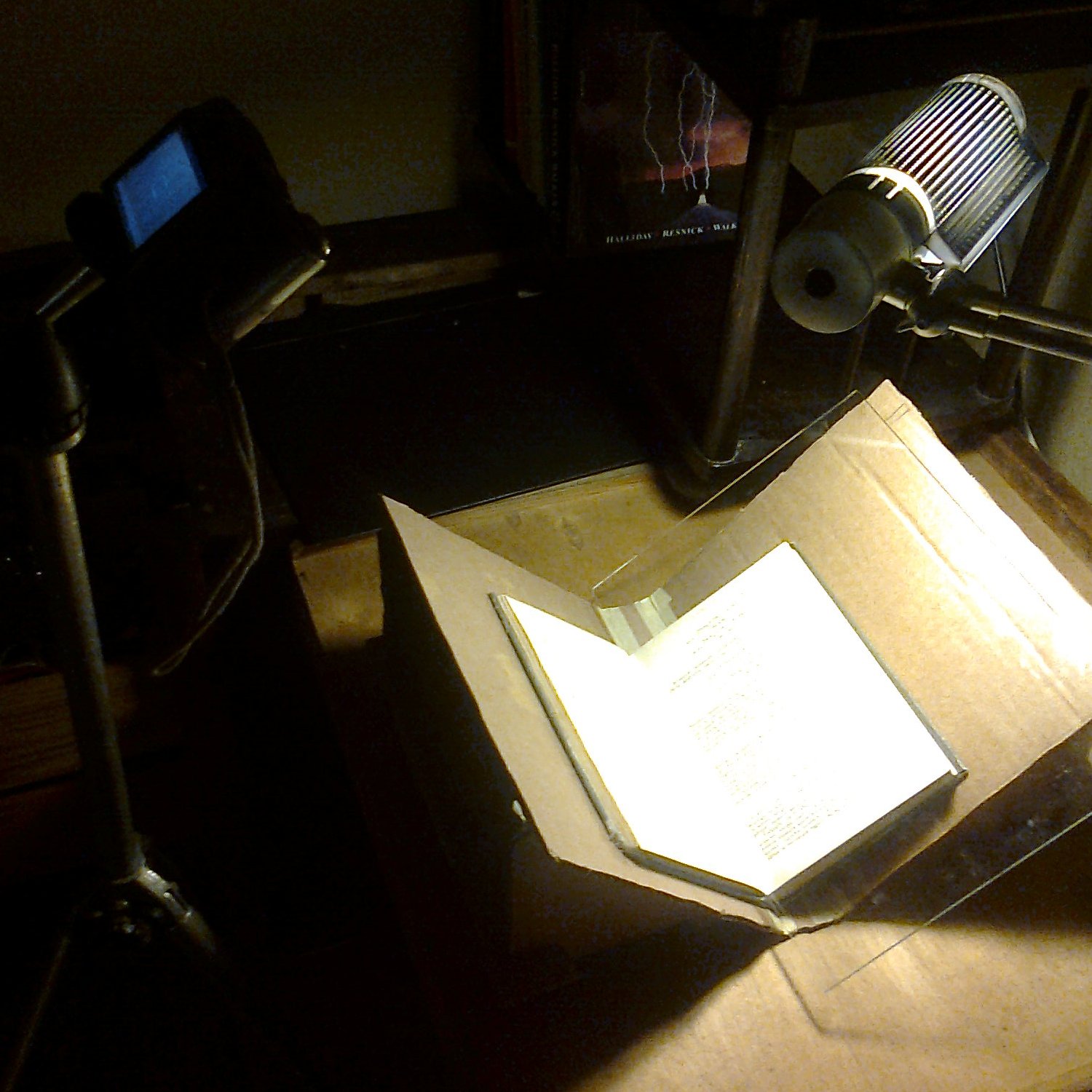
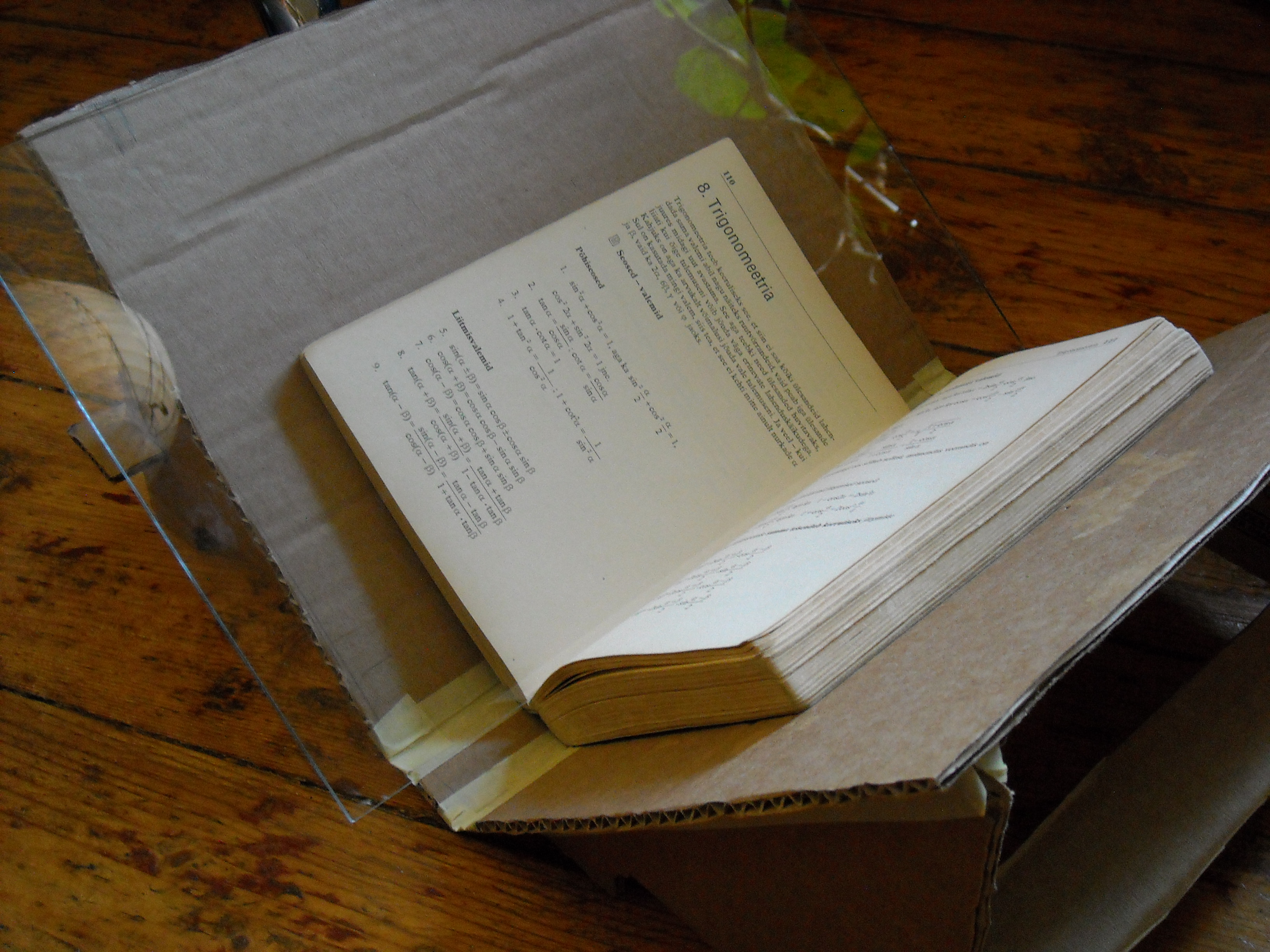
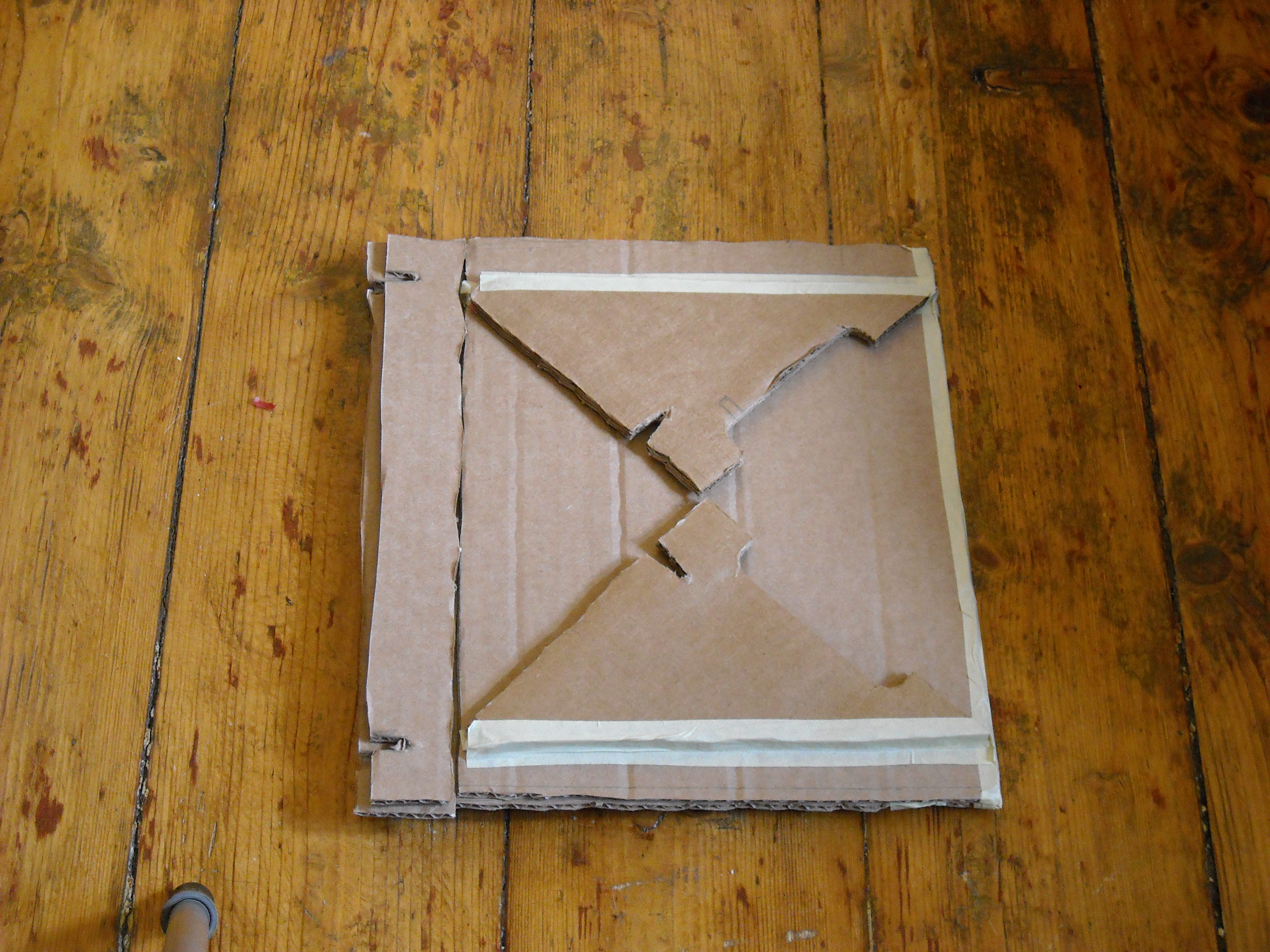
Want to scan books using your camera and tripod? Want to do it again and again in the future? No room for storing bulky book holder for that purpose?
Make a foldable book stand. Only some tape and cardboard boxes are needed.
My project is inspired by this instuctable https://www.instructables.com/id/Bargain-Price-Book-Scanner-From-A-Cardboard-Box/ which describes the general process of scanning well. And it has instructions for the editing on Windows.
In summary: to scan books using camera, you need:
1. camera
2. tripod
3. desk lamp
4. sheet of glass (size of page or bigger)
5. some suitable book stand
6. time and patience to edit images and combine them to PDF
This instructable is about nr 5. The stand makes the process easier and results better than they would be when done simply on tabletop.
The most time consuming part at first is the editing, but it will shrink with practice. BUT note that setting up the software for editing is not the easiest one click process - be prepared to mess around for a while.
I hope to soon publish an instructable about image editing and making PDF on Linux operating system. (Oops, couldn't repeat the process of installing all the tools on thumb drive linux - don't know if they are currently available at all or not - better let it wait until I get (for some reason) a clean install desktop system...)
Make a foldable book stand. Only some tape and cardboard boxes are needed.
My project is inspired by this instuctable https://www.instructables.com/id/Bargain-Price-Book-Scanner-From-A-Cardboard-Box/ which describes the general process of scanning well. And it has instructions for the editing on Windows.
In summary: to scan books using camera, you need:
1. camera
2. tripod
3. desk lamp
4. sheet of glass (size of page or bigger)
5. some suitable book stand
6. time and patience to edit images and combine them to PDF
This instructable is about nr 5. The stand makes the process easier and results better than they would be when done simply on tabletop.
The most time consuming part at first is the editing, but it will shrink with practice. BUT note that setting up the software for editing is not the easiest one click process - be prepared to mess around for a while.
You Need..
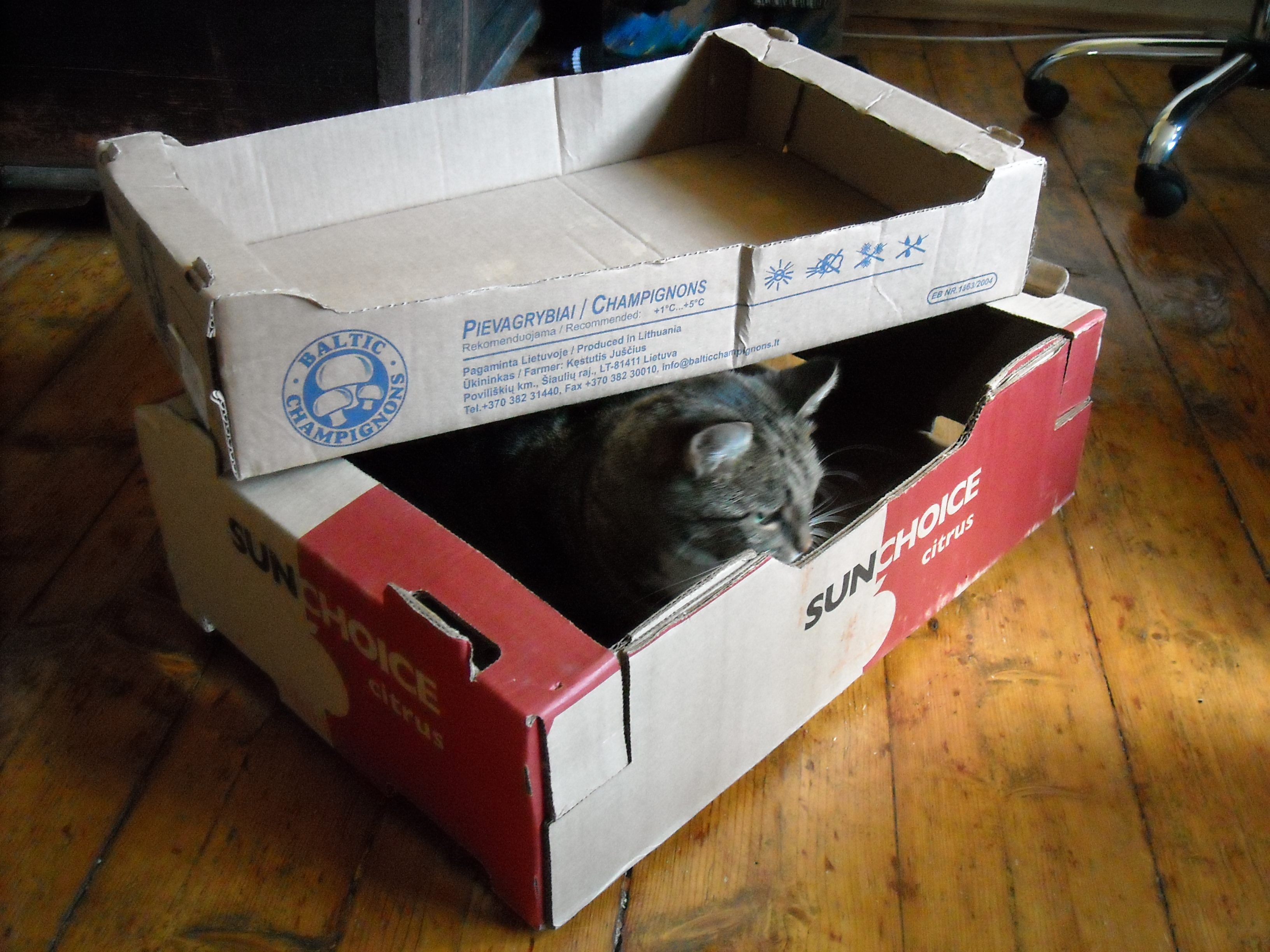
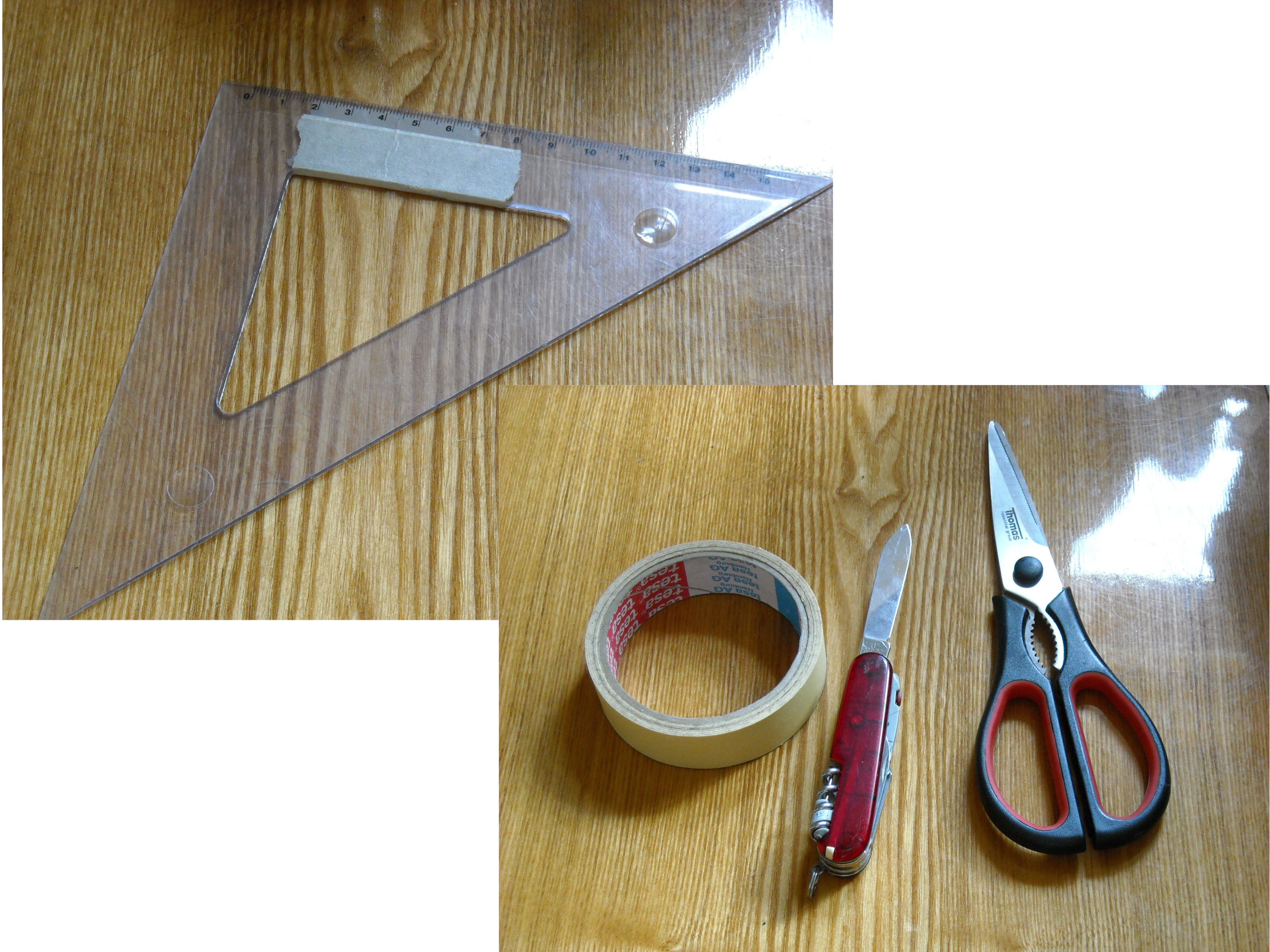
For a foldable book stand you will need:
hard cardboard
tape
knife
ruler - triangle with 45 degrees corners is best
pencil
scissors
hard cardboard
tape
knife
ruler - triangle with 45 degrees corners is best
pencil
scissors
Cut Cardboard
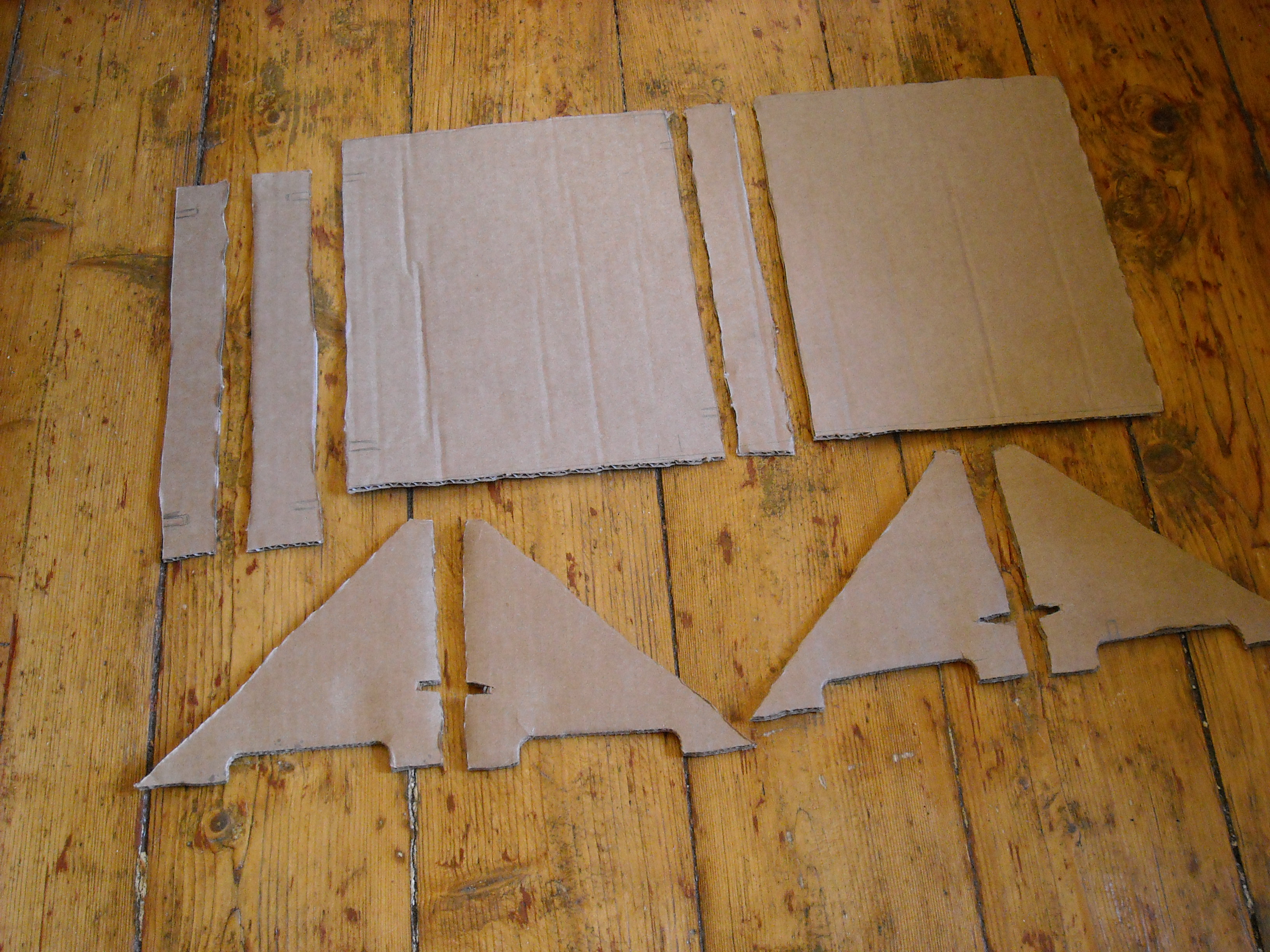
Mark pieces to be cut.
Pieces needed:
2x big rectangles (A4 for example or bigger)
4x triangles for "legs", corners 45 and 90 degrees, longest side correlates with short side of the previous rectangles
2x "leg holders" - thin rectangles for holding "legs" in position when in use
1x thin rectangle for book spine - leave this out if books of your interest tend to be very thin
Cut the pieces using knife. (Scissors are no good on hard cardboard. Edges do not have to be super precise.)
Cut slots into "legs" (triangles) as shown on image.
Pieces needed:
2x big rectangles (A4 for example or bigger)
4x triangles for "legs", corners 45 and 90 degrees, longest side correlates with short side of the previous rectangles
2x "leg holders" - thin rectangles for holding "legs" in position when in use
1x thin rectangle for book spine - leave this out if books of your interest tend to be very thin
Cut the pieces using knife. (Scissors are no good on hard cardboard. Edges do not have to be super precise.)
Cut slots into "legs" (triangles) as shown on image.
Tape It 1
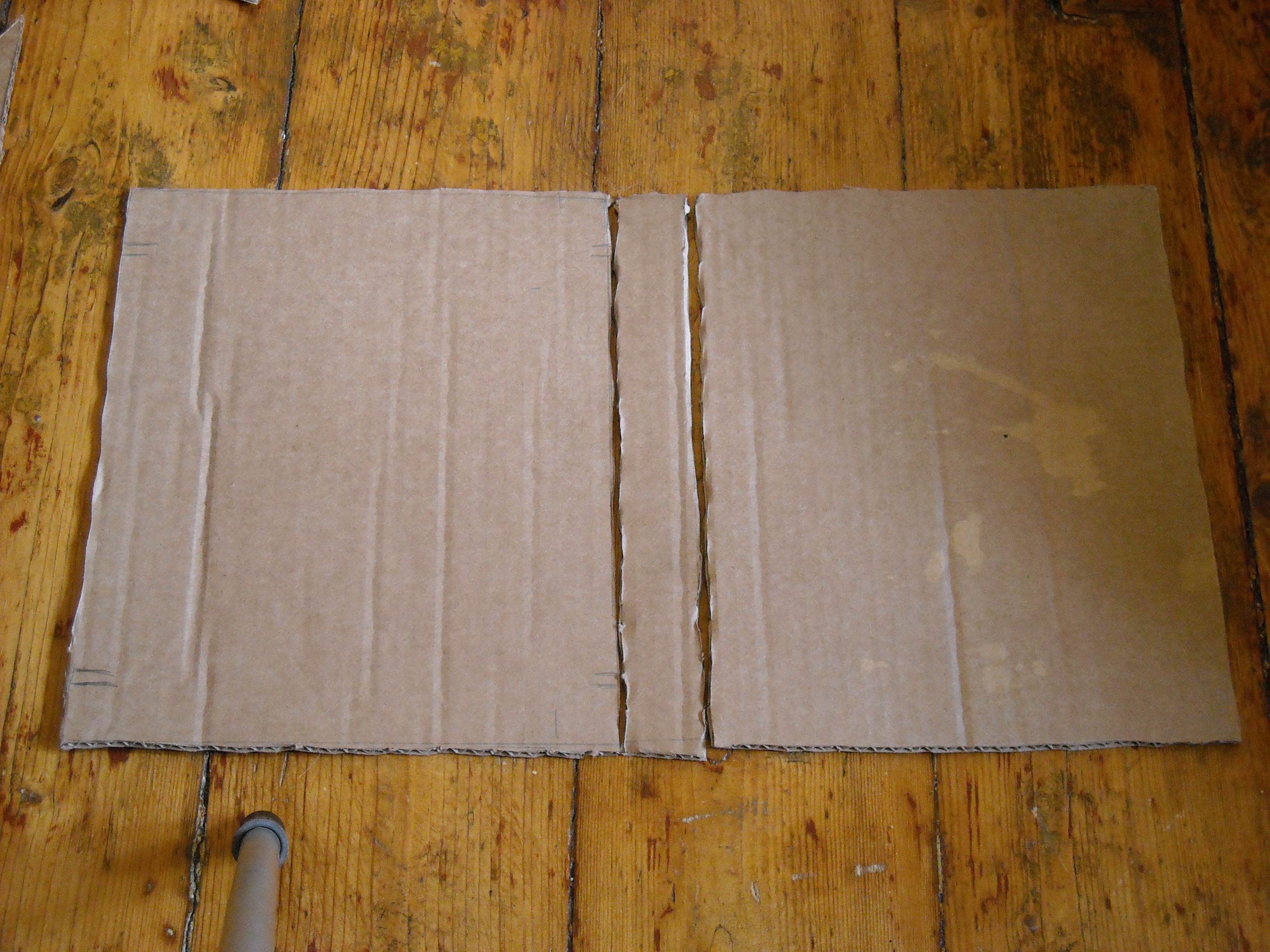
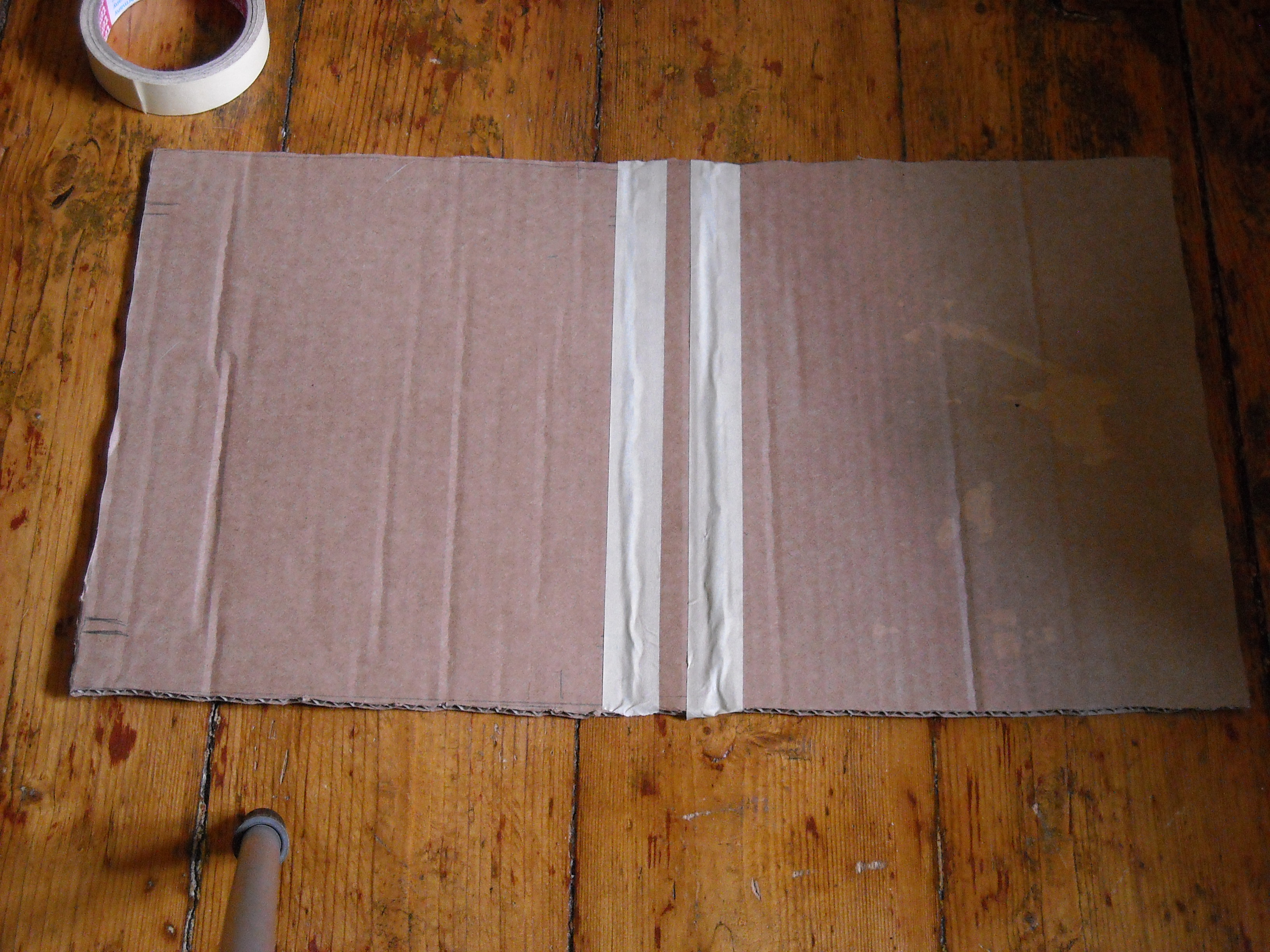
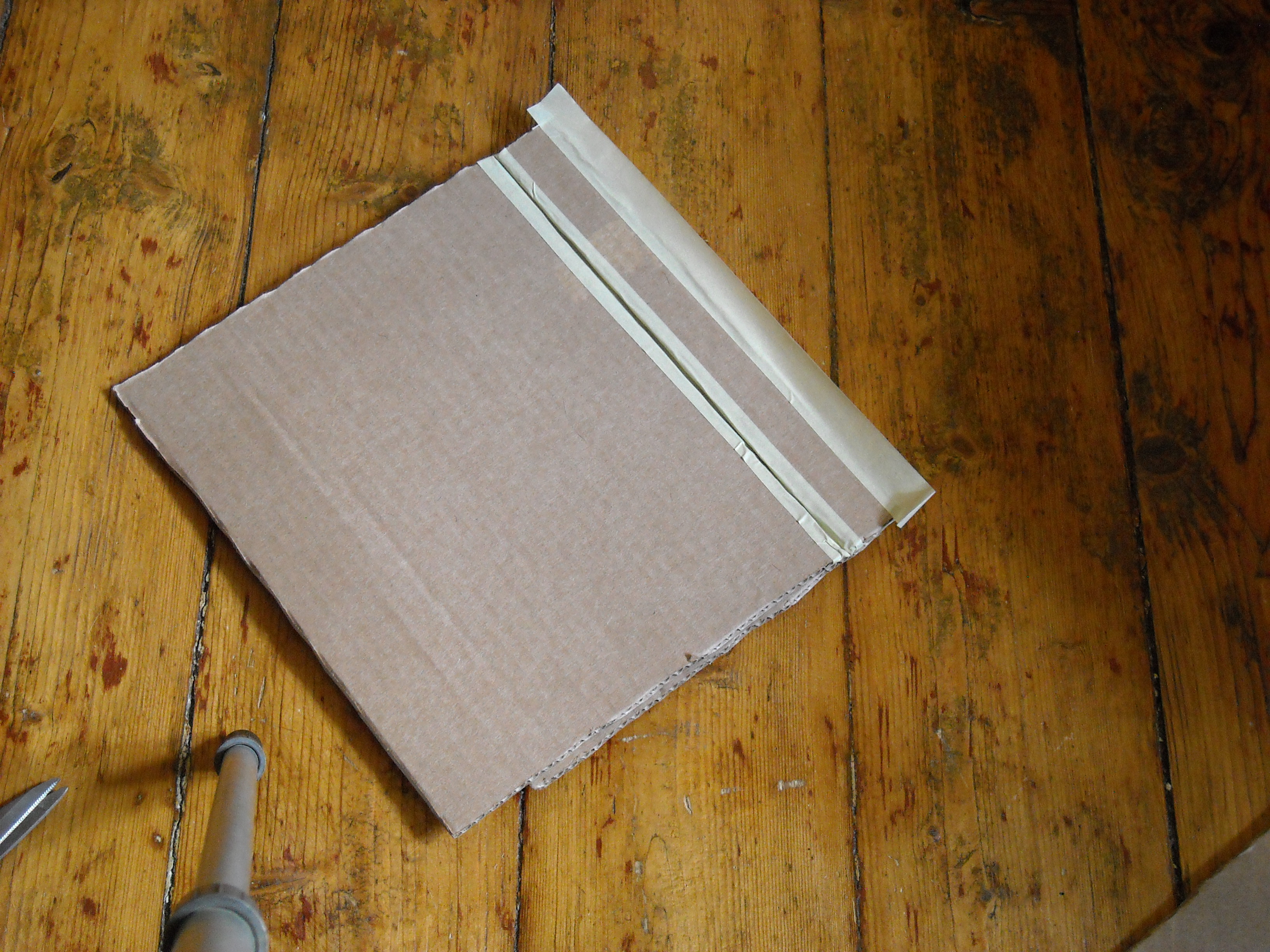
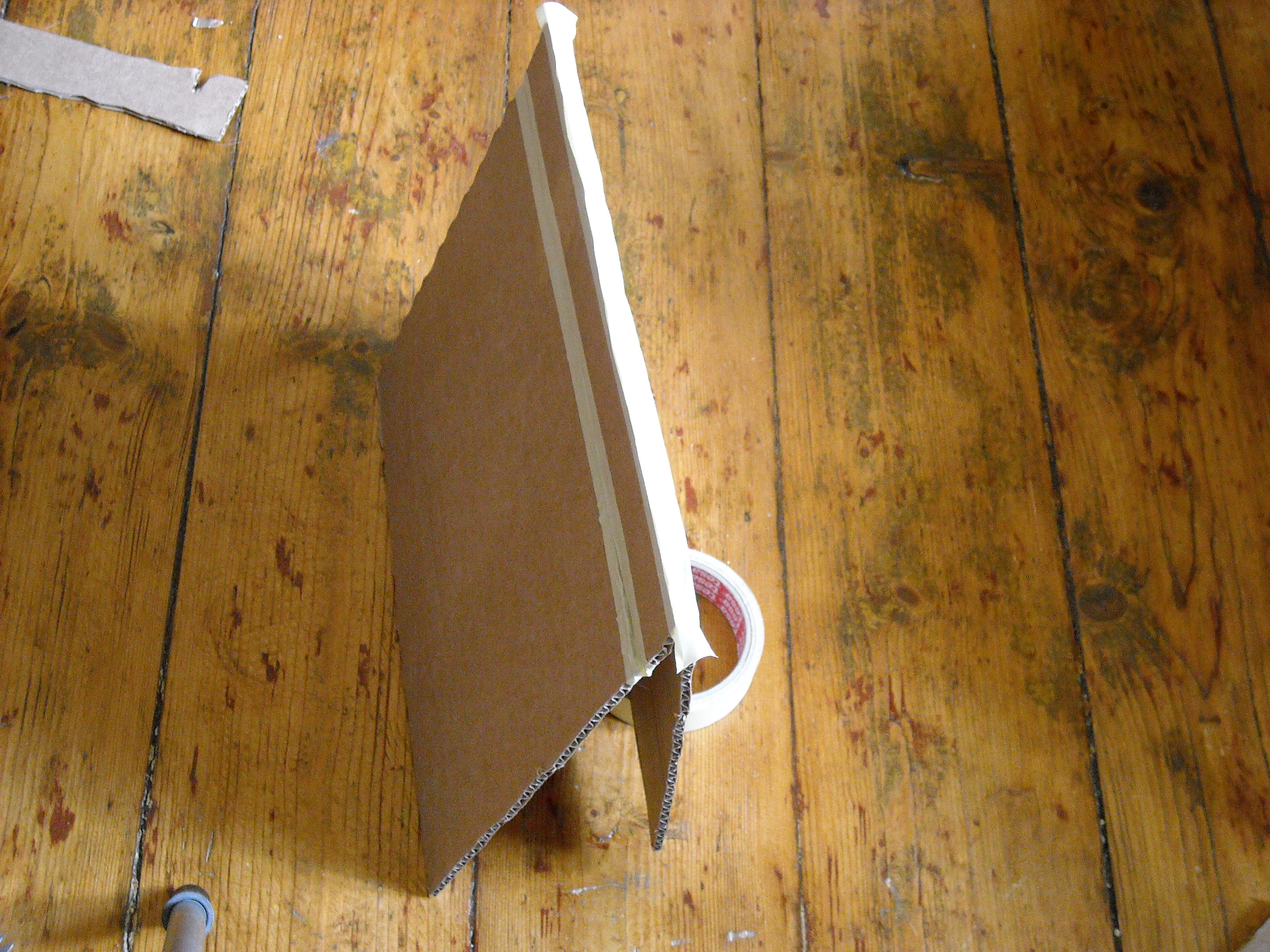
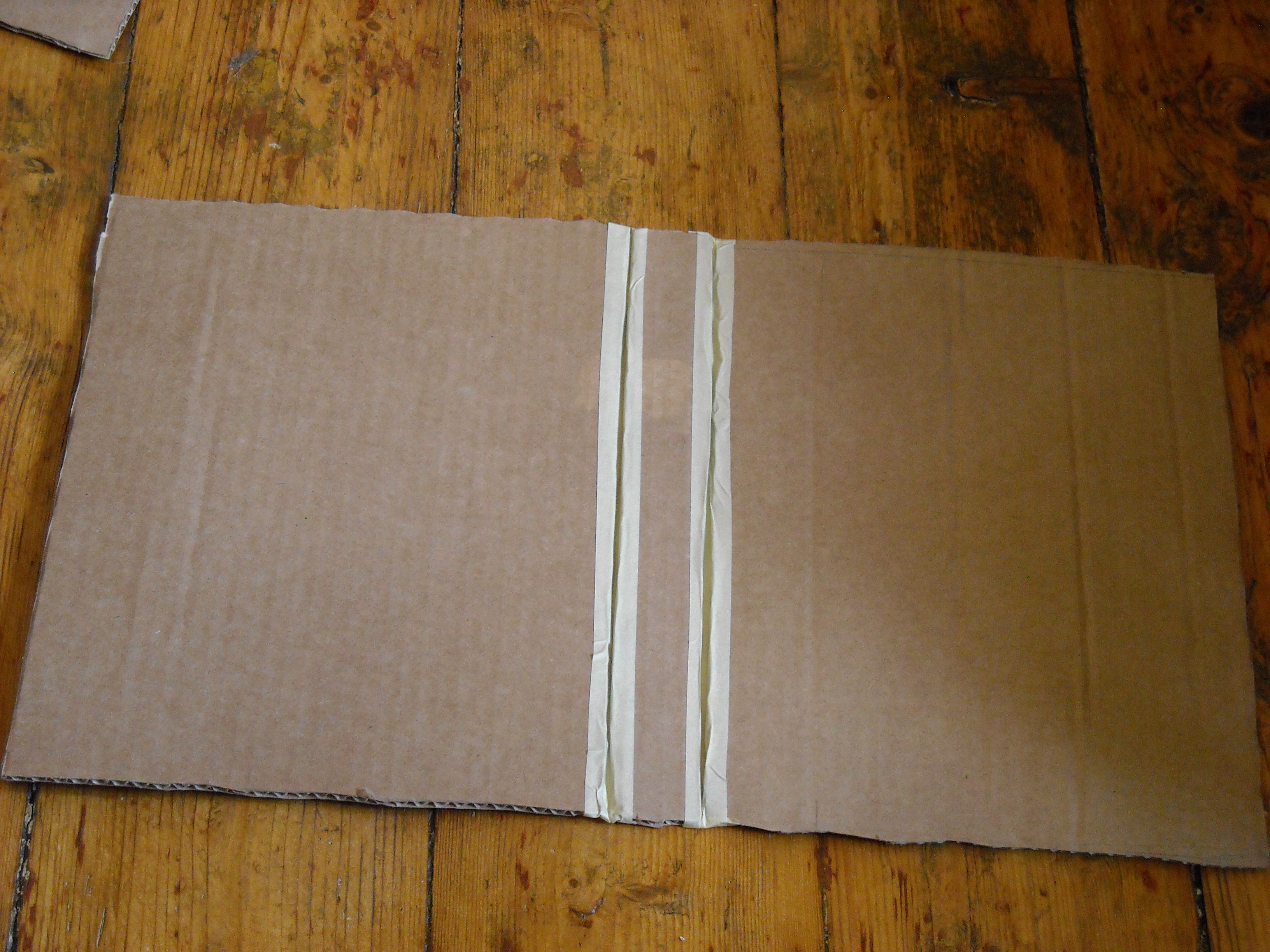
Lay down on working surface [big rectangle] - [spine] - [other big rectangle] longer edges side by side.
A little gap between them does no harm, maybe even benefits.
Tape them together on one side.
Turn them around.
Tape the other side while you hold the pieces folded together (see images).
You will get such an arrangement that can be folded one way.
A little gap between them does no harm, maybe even benefits.
Tape them together on one side.
Turn them around.
Tape the other side while you hold the pieces folded together (see images).
You will get such an arrangement that can be folded one way.
Tape It 2
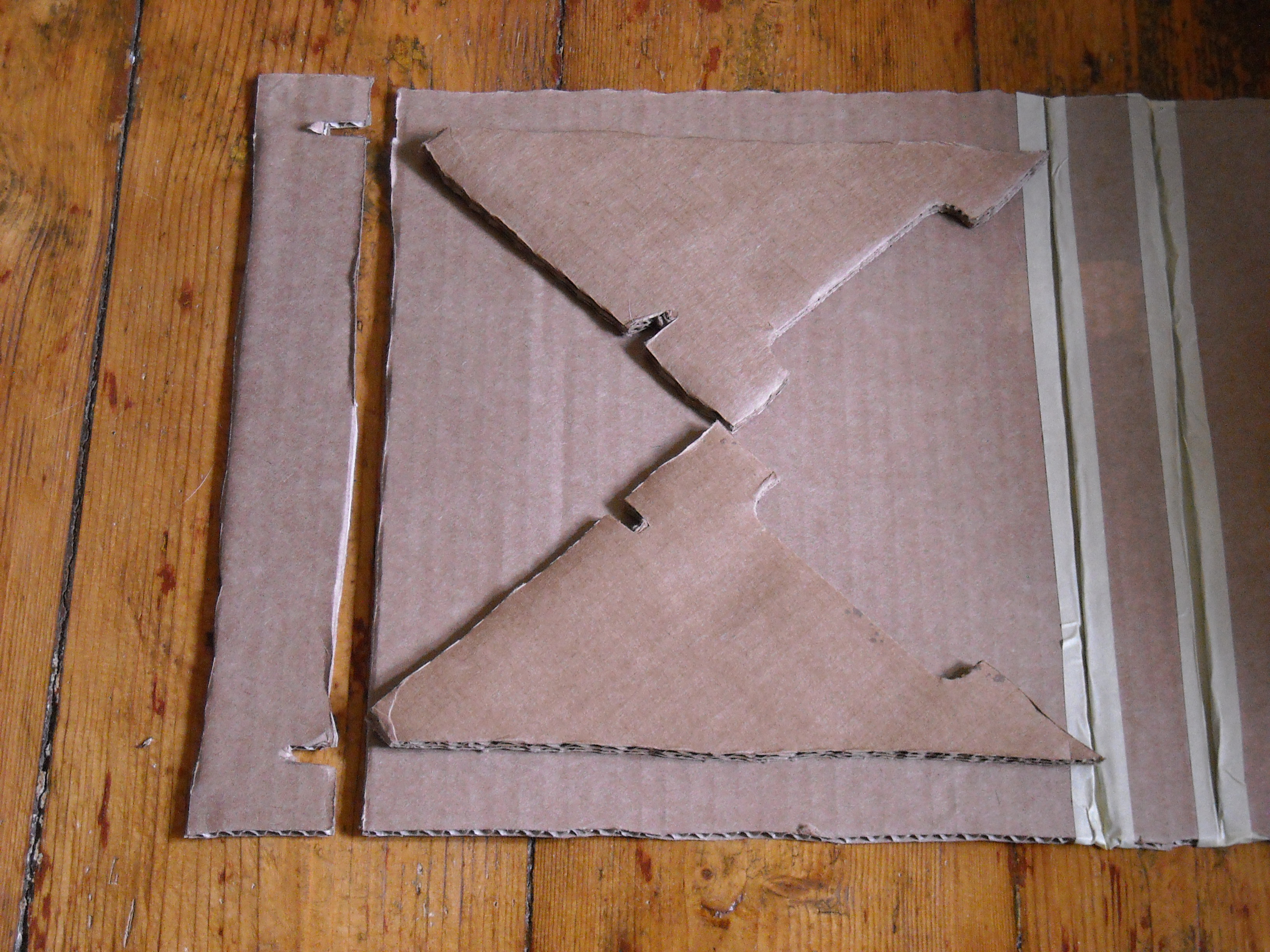
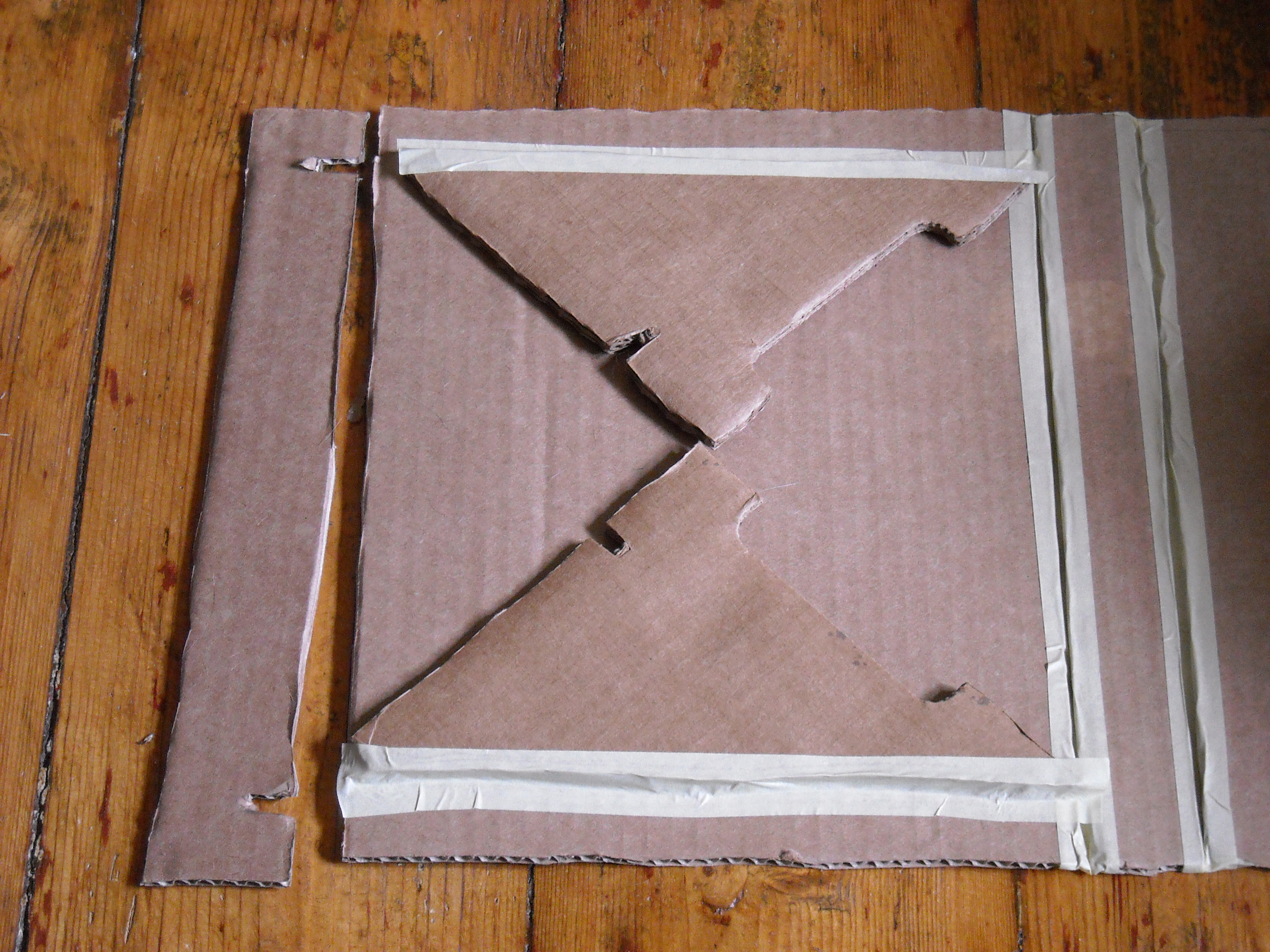
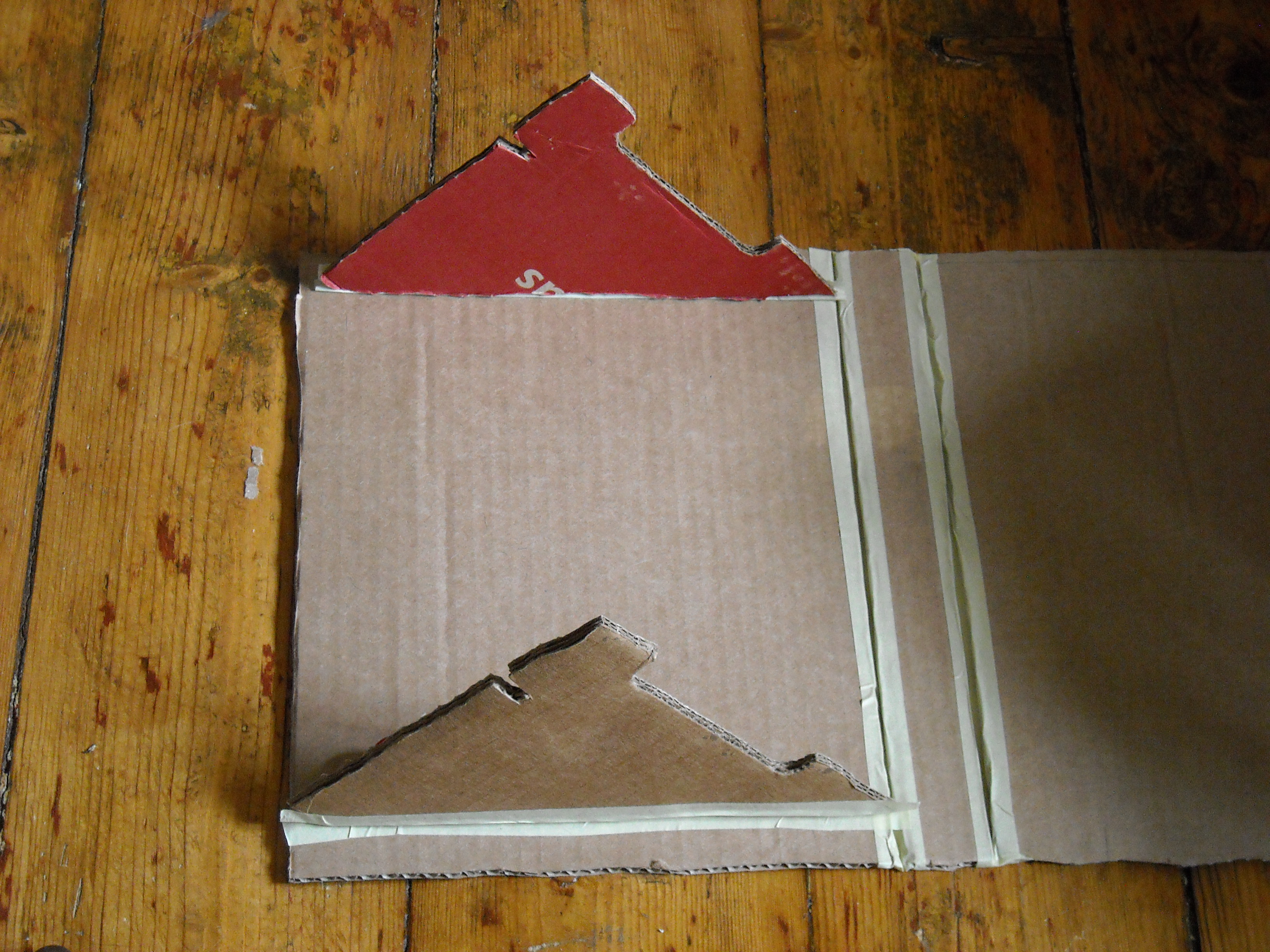
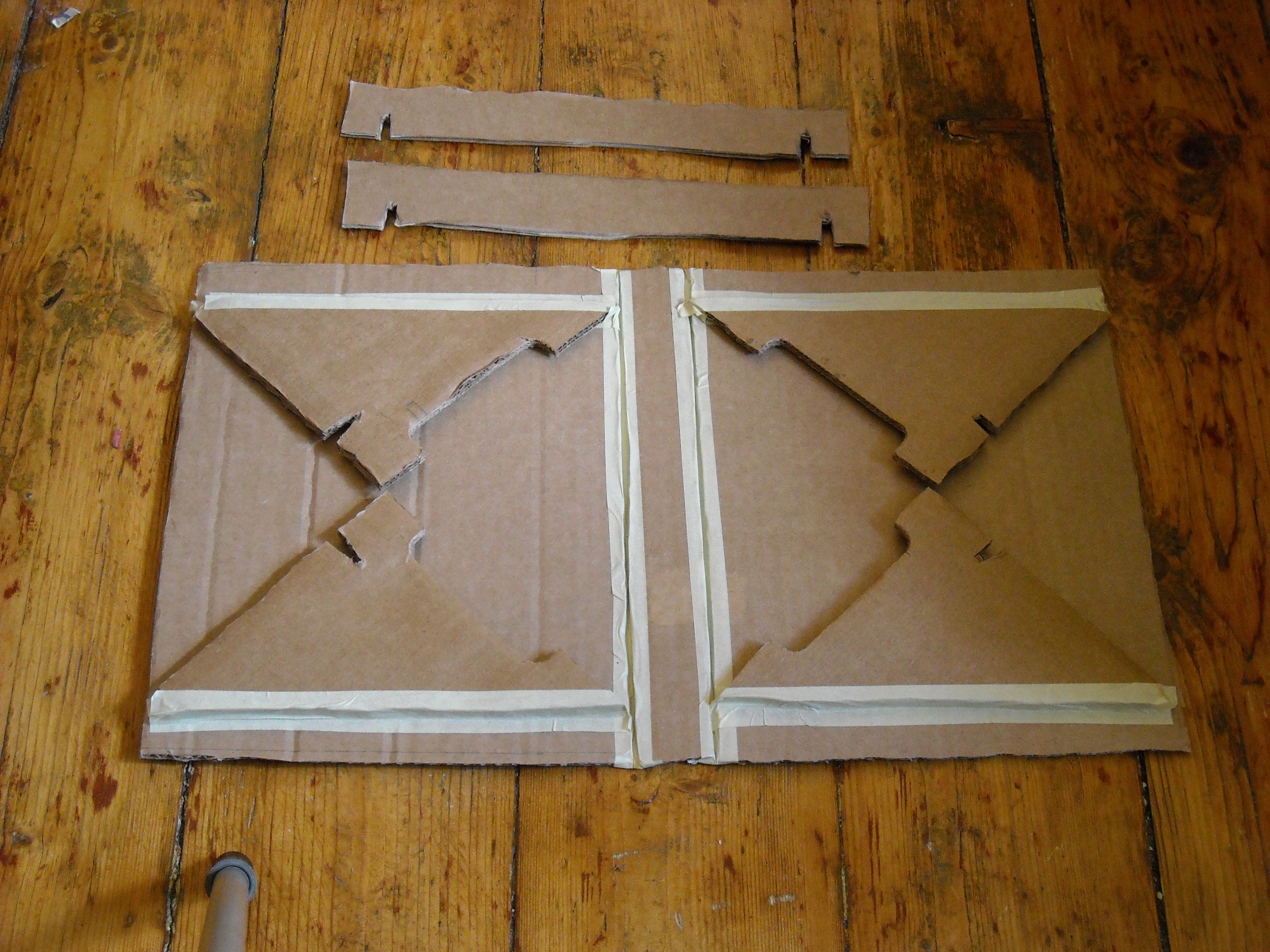
Arrange "legs" onto bigger rectangles and mark slots onto "leg holders". Cut the slots.
Check the positioning of the legs against the slots again (see images for exact positioning), and tape the legs to the big part.
Turn legs up (90 degrees) and tape the inner side of them.
Now they should fold down to the inside and up to 90 degrees but not fold out.
Check the positioning of the legs against the slots again (see images for exact positioning), and tape the legs to the big part.
Turn legs up (90 degrees) and tape the inner side of them.
Now they should fold down to the inside and up to 90 degrees but not fold out.
Ready
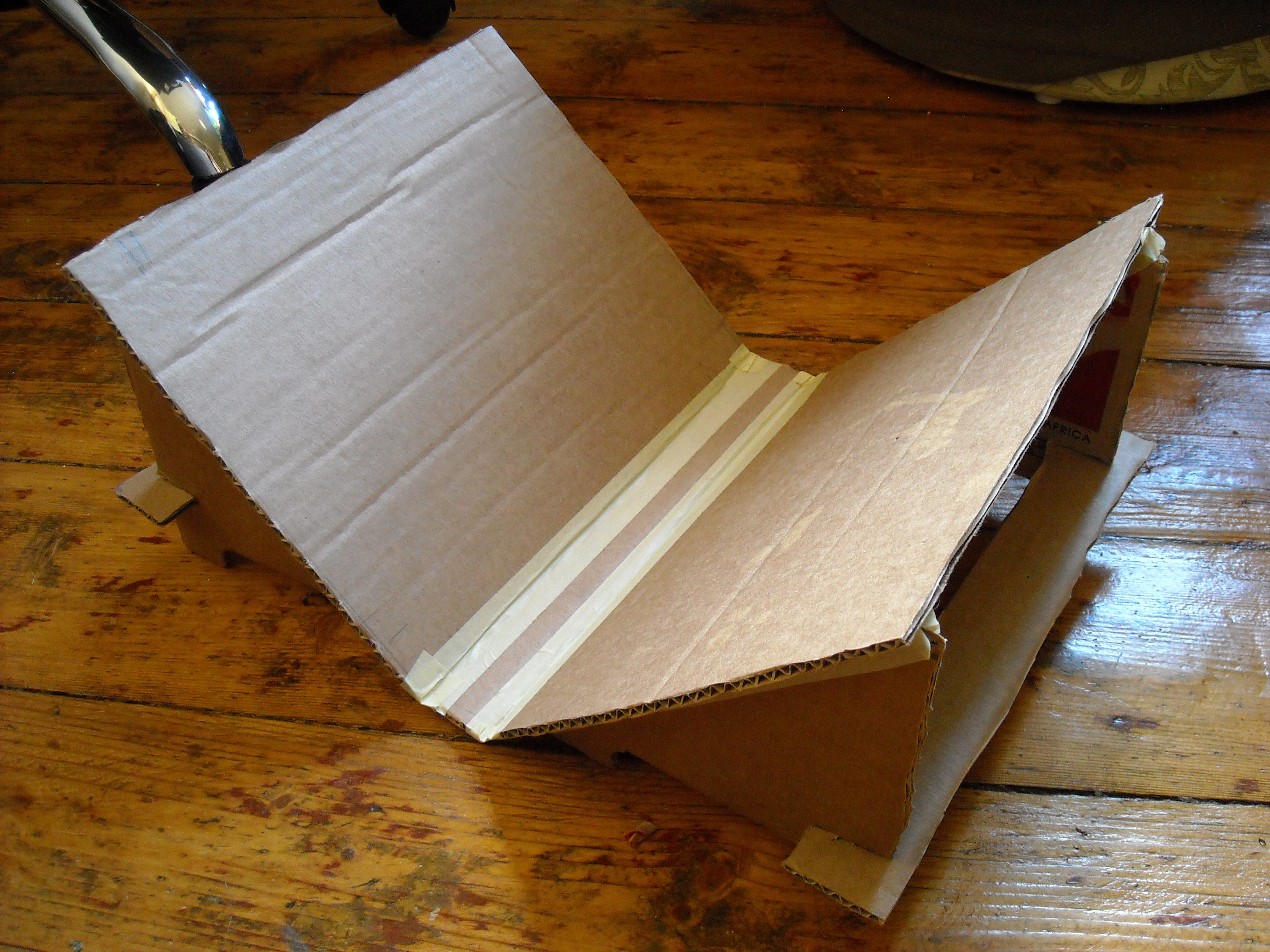
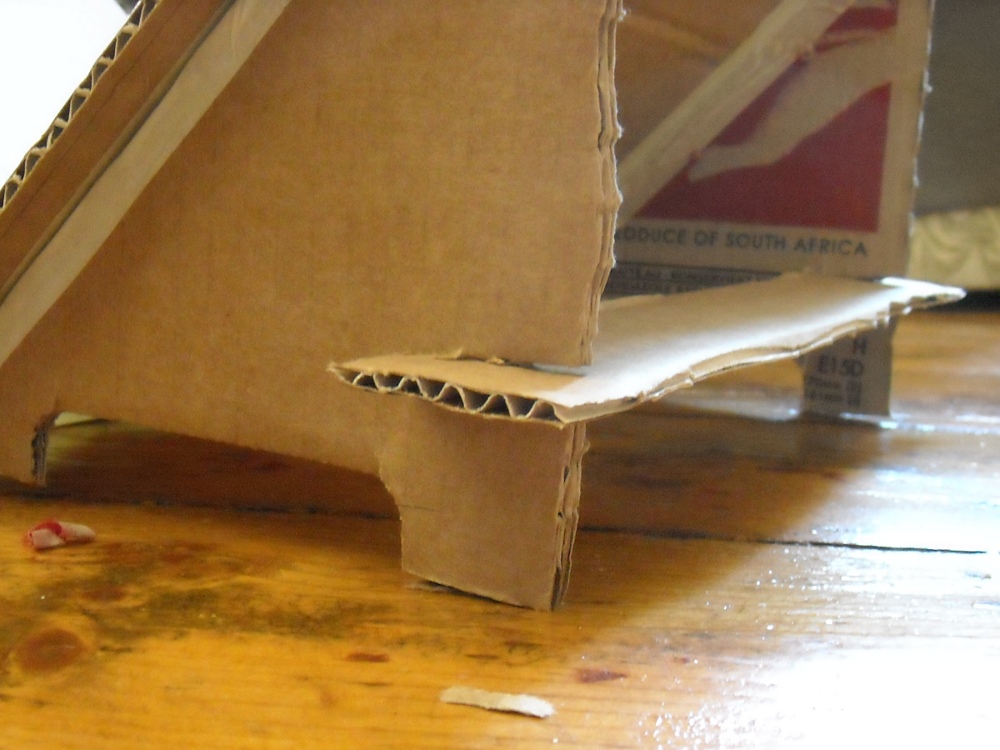

For working position insert leg holder slots to leg slots.
For storage position, take leg holders off and fold the thing slim.
For storage position, take leg holders off and fold the thing slim.
Tips
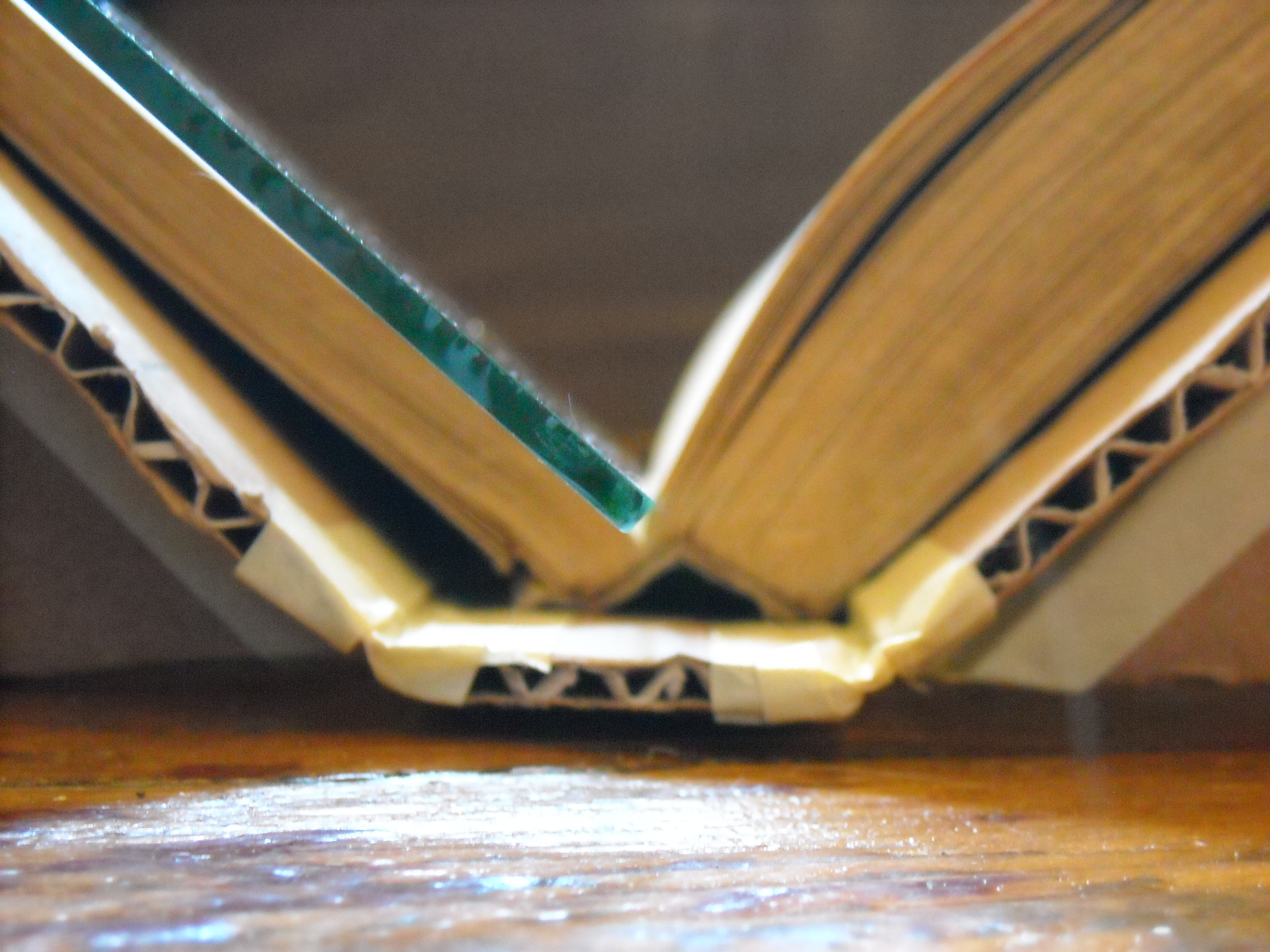
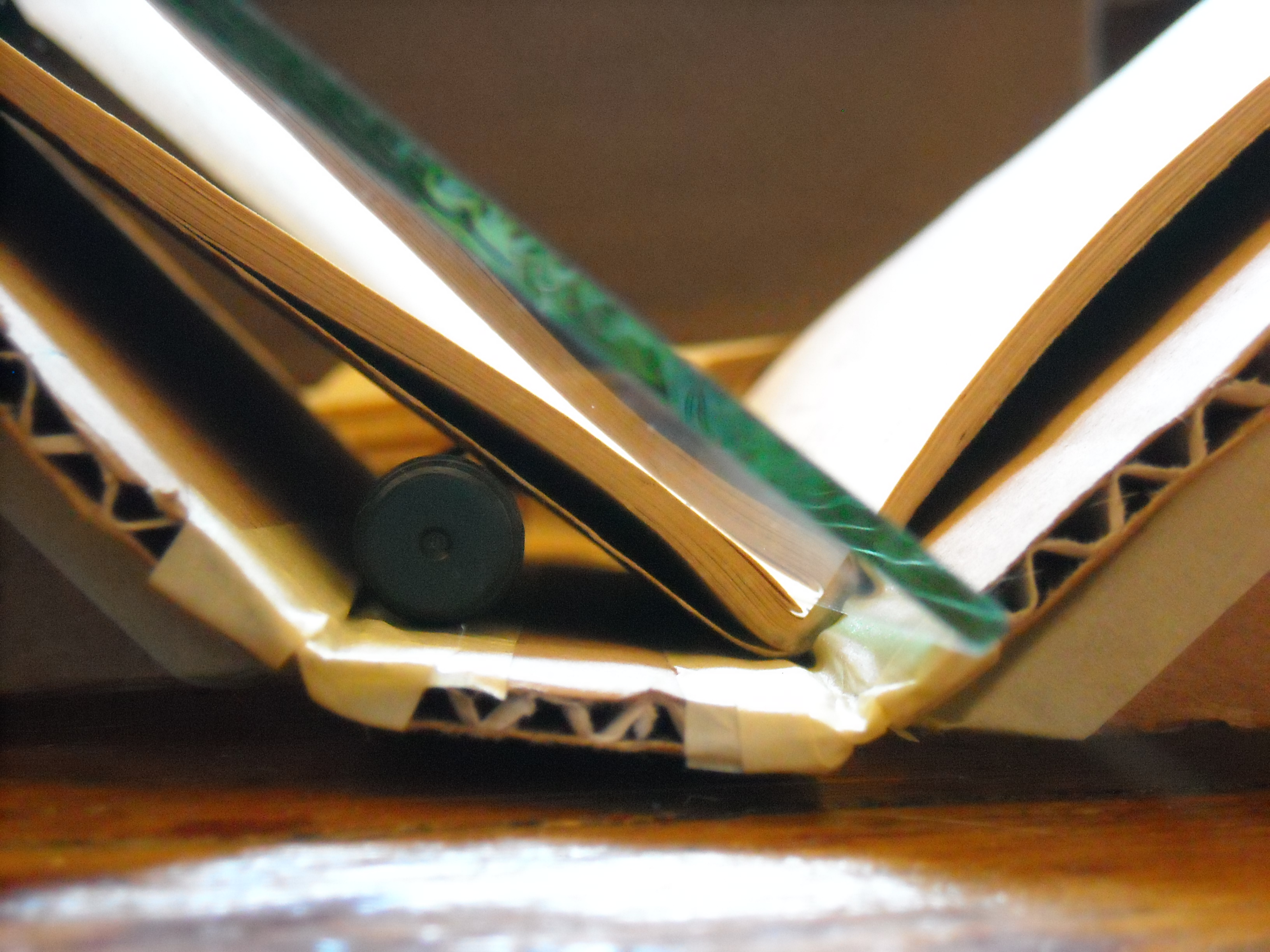

Tips for finding a glass sheet:
How to use the stand:
I hope to soon publish an instructable about image editing and making PDF on Linux operating system.
- From dead scanner - perfect size :)
- From image frame - can be borrowed and put back later.
How to use the stand:
- Arrange desk lamp, the stand and tripod in line.
- Open the first page to photograph, lay the glass on it.
- Turn off camera flash, use indoor setting for better initial white balance.
- Check and adjust the framing, use zoom if needed.
- Check if there is a reflection from the lamp in camera view, move the lamp to get most even lightning without a reflection. It does not have to perfectly even to get a readable file.
- Focus the camera and take picture. Lift the glass and turn the page. Repeat.
- If the book is very thin and not bigger than the glass and stand when open, you can take picture of both pages at the same time. With thick book, take pictures of even or odd pages first and others later.
- When you finish with one side pages and switch to other side, or when you skip parts of the book, take a picture of your hand in between - it makes it lot easier to distinguish the sequences later looking at image thumbnails.
- If you make a mistake, for example a unfocused image or a double image, delete it right away in the camera, it would be a pain to find and discard that image later. And they mess page order up if they stay there.
- Pay attention to pages that have just few lines and are blank in the center - my camera had trouble focusing on such.
I hope to soon publish an instructable about image editing and making PDF on Linux operating system.